Designing eLearning courses may seem rather straightforward, but the end-to-end methods can be challenging. This is especially true if you have no idea where to begin as developing a comprehensive course entails a myriad of factors. This includes the tools you need to use, the parameters you need to set, and of course the bulk and meat of your program.
Your primary goal would be to provide trainees with an exceptional eLearning experience, but you need to ensure that the project falls on a solid foundation of protocols. As you plunge into this new and daunting task, we’ve created a two-part series detailing the specifics of creating an eLearning course.
Here, we dig deeper and guide you in creating a solid structure—one that’s guaranteed to help your course resonate across your audiences. Without further ado, here’s the first part of our series—the preparation phase:
The Preparation Period
Elbow-deep: Conducting thorough research on the audience and subject
When it comes to creating educational content, everything matters. You need to take every single part of your audience into account, especially their age, income level, existing knowledge, capabilities, time, and of course, the value they can gain from participating in the course.
Your choice of educational tools and platforms will also play a crucial role in the success of your project, so how do you equip yourself with the proper foundation? Simple—conduct thorough research through the following tools:
- Surveys
- Polls
- Interviews
- Data analytics
Playing SMART: Creating attainable objectives
Your eLearning course must exist for a reason—it needs to add valuable information and skills on the learners’ end. For this reason, you’ll need to ensure that your objectives and goals remain aligned. To do so, you need to come up with SMART objectives—Specific, Measurable, Achievable, Realistic, and Timely. This should reflect not only on your end but your audience’s.
As you plan the entirety of your content, make sure to break things down into manageable steps, which allows them to achieve better outcomes. This will ensure that your modules will later come up clear and insightful, especially if you focus on specific skills and topics per module. In doing so, you make learning remain fun and exciting—never digressing.
Into Consideration: Determining the right instructional needs
Research and objectives are crucial aspects of your preparation period, but so are the instructional needs. You need to understand and analyze the learning audience not just as customers, but their needs and expectations as customers.
Make sure that the scope of content matches well with their expectations, especially when it comes to development. Learning about the need is one thing—creating actionable steps for implementation is another. If you want your eLearning course to resonate, put yourself in their shoes.
Getting Your eLearning Course Right
The preparation phase can be demanding, but the tips listed above allow you a good starting point towards eLearning course creation. Obstacles will still be present, however, especially since you’ll want to create an intuitive and responsive material that connects with your audiences better. To learn more about eLearning courses, make sure to tune in for part 2 of our series!
If you need assistance, however, don’t fret. Bihasa offers you the best online course development services in the Philippines, guaranteed to turn your content into well-structured digital courses. Allow us to make your eLearning courses happen—reach out today.

